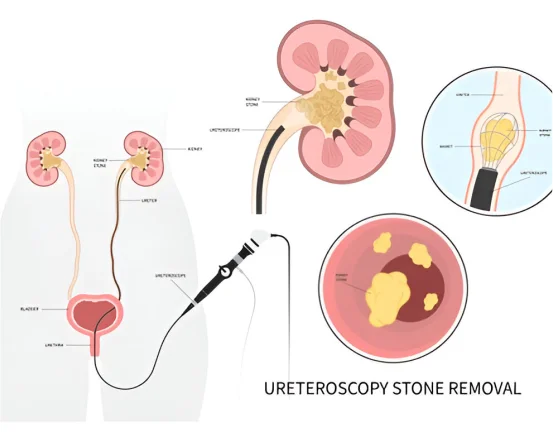Coronary Endarterectomy is a surgical procedure to remove significant blockages in the coronary vessels. It is typically performed along with coronary bypass grafting (CABG) when the blockages are too severe for the standard treatment. However, how can doctors tell whether a patient requires this life-saving, high-risk procedure? This is where a precise diagnosis for Coronary Endarterectomy Surgery comes into the picture. The diagnosis for Coronary Endarterectomy Surgery involves a thorough evaluation of coronary artery disease severity, particularly when conventional bypass procedures are not feasible due to diffuse arterial blockages. Physicians begin with a detailed clinical history, physical examination, and assessment of symptoms like chest pain or shortness of breath. Diagnostic tests such as electrocardiograms (ECG), echocardiograms, and cardiac stress tests help evaluate heart function and detect signs of ischemia. Coronary angiography remains the gold standard, providing detailed images of arterial blockages and guiding surgical planning. In high-risk or complex cases, additional imaging like CT coronary angiography or intravascular ultrasound (IVUS) may be used for better visualization. Accurate diagnosis is essential to determine if endarterectomy, a procedure to remove plaque from within the artery walls, is needed alongside or instead of bypass surgery. Timely and precise diagnosis improves surgical outcomes and overall cardiovascular health.
Why Is Diagnosis for Coronary Endarterectomy Surgery?
Proper diagnosis helps identify:
- The severity of coronary blockages to arteries
- Acceptability for regular bypass surgery or the need for an endarterectomy
- The risk factors underpinning the operation that can influence the outcome of surgery
- Heart conditions that are associated with it (e.g. Left ventricular dysfunction)
An early and accurate diagnosis permits the cardiologists as well as cardiac surgeons develop an individual treatment plan and pick the most secure and efficient surgical procedure.
Key Symptoms Leading to Diagnosis
Patients who require Coronary Endarterectomy typically exhibit symptoms like:
- Angina or chest pain persists
- Breathlessness, particularly when you are active
- The weakness and fatigue of the body
- Heartbeat irregularity or palpitations
- A history of heart attacks or unstable angina
If the symptoms are serious and are not responding to medications Advanced testing for imaging or diagnostics are recommended.
Essential Diagnostic Tests for Coronary Endarterectomy Surgery
These are among the frequently used tests that are used to determine the need to determine the need for Coronary Endarterectomy Surgery
Electrocardiogram (ECG)
- It detects irregularities in the heart rhythm, and also indications of an earlier or continuing heart attack.
- The first step is to determine the heart’s electrical activity.
Echocardiogram
- Ultrasound-based test that gives images of the structure of the heart and its motion.
- It helps evaluate the function of the pump and detect valve problems.
Stress Test
- The heart’s performance is measured when under physical strain.
- Finds areas of reduced blood flow.
Cardiac CT or MRI Scan
- 3D-scans of the blood vessels and tissues in the heart.
- An alternative that isn’t invasive to determine the severity of blockage.
Coronary Angiography (Cardiac Catheterization)
- Test for gold standard.
- It involves inserting a catheter into the coronary arteries to inject dye contrast and then take X-ray pictures.
- Determines the exact location and size of arterial blockages. This is particularly crucial for planning surgical procedures.
When Is Coronary Endarterectomy Recommended?
A Coronary Endarterectomy may be considered if:
- The artery is very affected by calcification or is diffusely infected
- Traditional bypass grafting isn’t possible due to the weight of plaque accumulation
- Other arteries are also involved which require the use of a more aggressive surgical procedure
Surgeons take the final decision on the basis of scans and findings from intraoperative examinations.
Role of a Multidisciplinary Team
When these diagnostics are released A team comprised of:
- Cardiologists
- Surgeons in cardiothoracic surgery
- Radiologists
- Anesthesiologists
team to evaluate the risk-to-benefit relationship and determine whether patients are a candidate to undergo Coronary Endarterectomy Surgery.
Conclusion
The assessment for Coronary Endarterectomy Surgery is a thorough, step-by-step procedure that involves advanced imaging technology, clinical assessments, and multidisciplinary planning. A precise diagnosis is essential to ensure patient safety and enhances the surgical outcome and aids in controlling expectations.
If you or someone in your family is suffering from signs of heart disease that is advanced get a consultation with a cardiologist right away. A timely diagnosis can make the world of difference.























